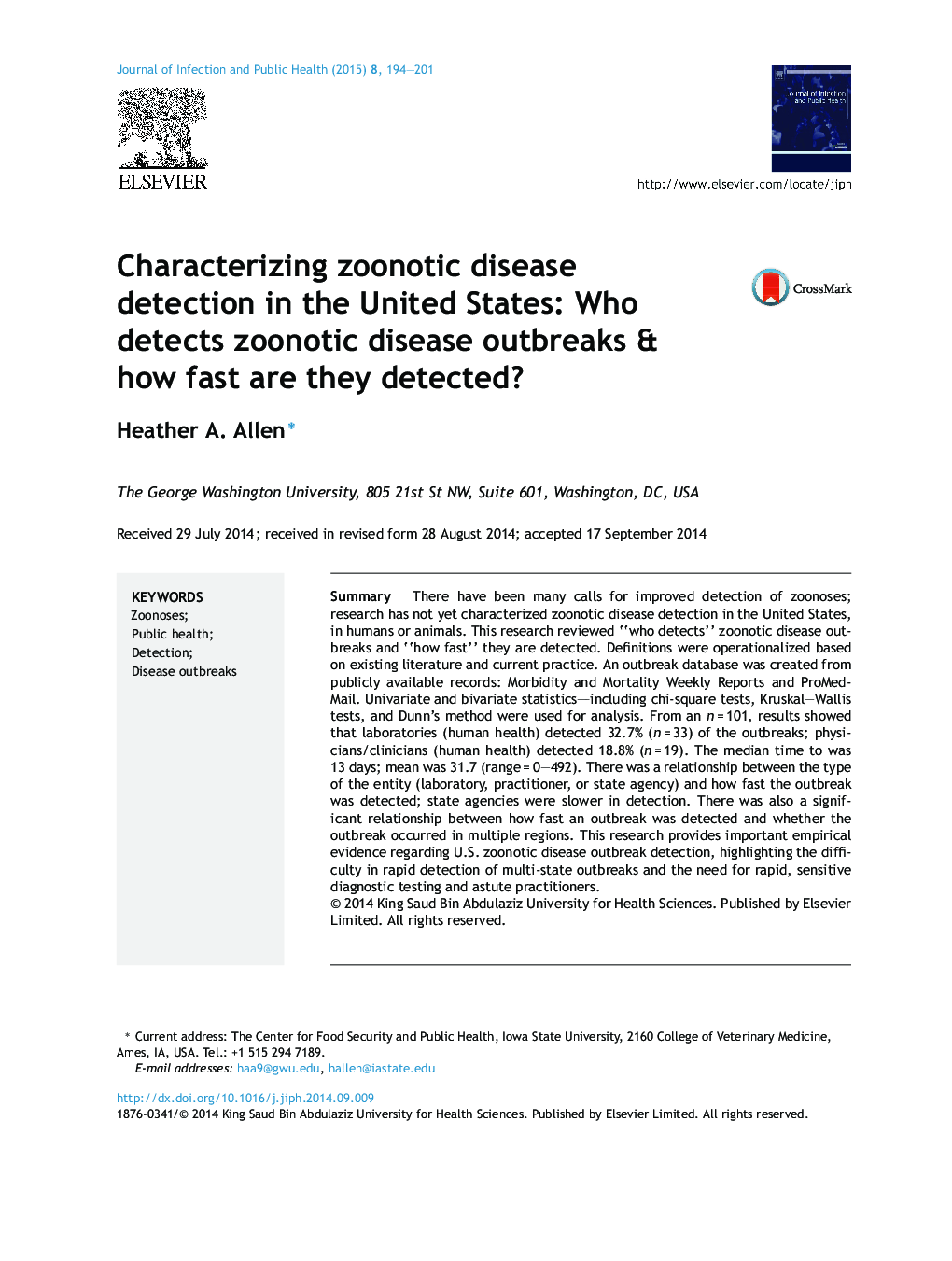| Article ID | Journal | Published Year | Pages | File Type |
|---|---|---|---|---|
| 3406039 | Journal of Infection and Public Health | 2015 | 8 Pages |
SummaryThere have been many calls for improved detection of zoonoses; research has not yet characterized zoonotic disease detection in the United States, in humans or animals. This research reviewed “who detects” zoonotic disease outbreaks and “how fast” they are detected. Definitions were operationalized based on existing literature and current practice. An outbreak database was created from publicly available records: Morbidity and Mortality Weekly Reports and ProMed-Mail. Univariate and bivariate statistics—including chi-square tests, Kruskal–Wallis tests, and Dunn's method were used for analysis. From an n = 101, results showed that laboratories (human health) detected 32.7% (n = 33) of the outbreaks; physicians/clinicians (human health) detected 18.8% (n = 19). The median time to was 13 days; mean was 31.7 (range = 0–492). There was a relationship between the type of the entity (laboratory, practitioner, or state agency) and how fast the outbreak was detected; state agencies were slower in detection. There was also a significant relationship between how fast an outbreak was detected and whether the outbreak occurred in multiple regions. This research provides important empirical evidence regarding U.S. zoonotic disease outbreak detection, highlighting the difficulty in rapid detection of multi-state outbreaks and the need for rapid, sensitive diagnostic testing and astute practitioners.
